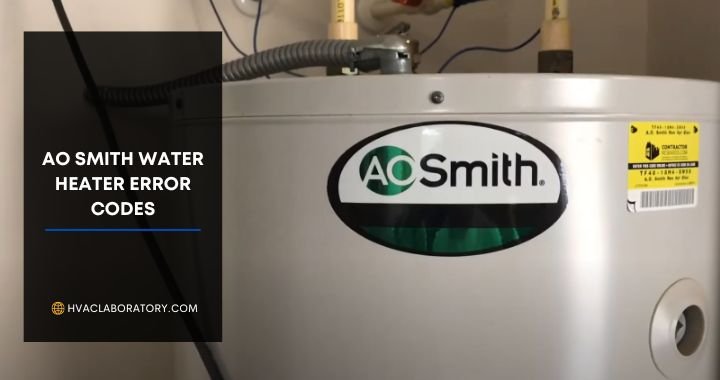
ERROR CODE F1 indicates a specific issue within the AO Smith water heater. Think of it like a check engine light in a car. It’s a signal that says, “Hey, something’s not working quite right here!” You don’t need to panic, but it does mean your water heater is crying out for some attention. This guide will walk you through what this error code means, when you should roll up your sleeves and try a fix yourself, and when it’s best to call in the experts.
Understanding Error Code F1
Error codes are a nifty way for appliances to communicate when something’s amiss. The F1 code in your AO Smith water heater is generally linked to issues with the air intake or exhaust. Imagine trying to breathe through a straw that’s pinched shut—that’s how your water heater feels when there’s an air flow issue. It’s a defense mechanism that prevents the machine from running under unsafe conditions.
Your water heater has several components that ensure safe and efficient operation, just like a team working together to get a project done. When one person on the team isn’t pulling their weight, it affects everyone else. With error code F1, it’s usually a sensor or ventilation component that’s not working as it should. This can mean a blocked vent, a stuck fan, or even an electronic glitch in the system.
If you’re staring at this flashing F1 code and feeling slightly overwhelmed, it’s important to know that sometimes these issues can be easily resolved. However, there are times when calling a professional is the safest and most effective route. The key lies in understanding the problem’s complexity and gauging your own comfort level with handling it.
DIY Fixes You Can Try
Before dialing up the technician, there are a few simple checks and fixes you can try on your own. Just like checking for a tripped breaker when the lights go out, these basic steps might save you time and money. First, make sure your water heater is getting plenty of air. This means checking that vents are clear of any obstructions like lint, dust, or any outdoor debris. Clearing away obstructions can often resolve airflow issues, much like removing a clog from a drain.
If the vent is clear, try resetting your water heater. This can sometimes reset any minor electronic issues. Switch off the heater, wait a few minutes, and then turn it back on. It’s the same logic as rebooting a computer when it’s acting up.
Lastly, listen for unusual noises. A water heater can sometimes make buzzing or banging sounds if there’s an internal issue. If you hear anything unusual, it might be time to call in the professionals. These noises are like the heater’s way of trying to tell you that something’s not quite right.
Knowing When to Call a Technician
So, when should you throw in the towel and call a technician? If you’ve checked the vents, reset the heater, and there’s still no change, it might be time to pick up the phone. A professional technician has the tools and expertise to diagnose and fix deeper issues that you can’t see. It’s kind of like calling a plumber when your DIY efforts to fix a leaky sink don’t cut it.
It’s prudent to call if the F1 error keeps popping up even after several resets or if your water heater seems to be working harder than usual. Like a car that’s overheating, running a malfunctioning heater can lead to bigger issues down the road—it’s better to address it sooner rather than later. Additionally, if you ever start to smell gas or notice water leaking from the heater, those are strong signals to shut off the unit and get help immediately.
Professional technicians can also help in ways you might not expect. They can provide advice on maintaining your heater in tip-top shape, much like a personal trainer guiding you through a workout regimen to keep you healthy. Their insight on preventive measures can save you from future headaches.
Preventative Measures and Final Thoughts
They say prevention is better than cure, and this couldn’t be truer for your water heater. Regular maintenance is key to extending the life of your appliance and avoiding those pesky error codes. Think of it like going to the dentist for regular cleanings to prevent cavities. Routine care can keep everything running smoothly.
Scheduling an annual check-up with a technician can catch potential issues before they escalate. It’s an investment in peace of mind, ensuring your water heater functions efficiently and safely. Plus, a well-maintained heater uses less energy, which is good for the environment and your wallet.
In conclusion, dealing with an AO Smith water heater error code F1 doesn’t have to be a daunting task. By understanding what the code means, trying a few simple DIY fixes, and knowing when to call in professional help, you’ll be better prepared to handle the situation. Just remember, it’s all about balance—doing what you comfortably can and leaving the rest to the experts. Stay proactive with routine maintenance and your water heater will continue to serve you reliably for years to come.